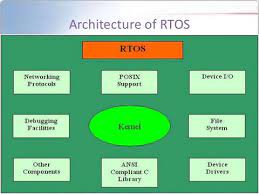Unlocking Precision: The Power of Real-Time Operating Systems (RTOS)
Real-Time Operating Systems (RTOS): Enhancing Performance and Reliability
A real-time operating system (RTOS) is a specialised software system designed to manage tasks with precise timing constraints. Unlike general-purpose operating systems, RTOS is built to provide deterministic behaviour, ensuring that critical tasks are executed within specific time limits. This makes RTOS ideal for applications where timing accuracy, reliability, and performance are crucial.
Key Features of RTOS:
- Deterministic Behaviour: RTOS guarantees that tasks are completed within predefined time constraints, making it suitable for real-time applications such as industrial automation, medical devices, automotive systems, and more.
- Task Scheduling: RTOS employs efficient task scheduling algorithms to prioritise and manage tasks based on their urgency and deadlines.
- Interrupt Handling: RTOS provides fast and predictable interrupt handling mechanisms to respond to external events promptly without compromising system performance.
- Memory Management: RTOS optimises memory usage by allocating resources efficiently and preventing memory leaks or fragmentation.
Applications of RTOS:
RTOS is widely used in various industries where real-time performance is critical. Some common applications include:
- Automotive Systems: In-car infotainment systems, engine control units (ECUs), advanced driver-assistance systems (ADAS), etc.
- Industrial Automation: Programmable logic controllers (PLCs), robotics, supervisory control and data acquisition (SCADA) systems.
- Aerospace and Defence: Avionics systems, unmanned aerial vehicles (UAVs), missile guidance systems.
- Medical Devices: Patient monitoring systems, infusion pumps, diagnostic equipment.
- Telecommunications: Network routers, switches, base stations for mobile communication.
The Future of Real-Time Operating Systems
In an increasingly connected world where IoT devices, autonomous vehicles, and smart technologies are becoming ubiquitous, the demand for reliable and efficient real-time operating systems continues to grow. As technology advances and new challenges arise, RTOS will play a vital role in enabling innovative solutions that require precise timing control and high performance.
Understanding Real-Time Operating Systems: Common Queries Explored
Where are RTOS used?
Real-Time Operating Systems (RTOS) find extensive use across various industries and applications where precise timing, reliability, and performance are paramount. Commonly, RTOS is employed in sectors such as automotive systems for controlling engine functions, in-car infotainment systems, and advanced driver-assistance systems (ADAS). Additionally, RTOS plays a crucial role in industrial automation for managing programmable logic controllers (PLCs), robotics, and supervisory control and data acquisition (SCADA) systems. In the aerospace and defence sector, RTOS is utilised in avionics systems, unmanned aerial vehicles (UAVs), and missile guidance systems to ensure real-time operation. Moreover, RTOS is vital in medical devices like patient monitoring systems, infusion pumps, and diagnostic equipment where accurate timing is critical for patient safety. Telecommunications also benefit from RTOS in network routers, switches, and base stations to maintain reliable communication services.
What is an RTOS example?
An example of a Real-Time Operating System (RTOS) is FreeRTOS, a popular open-source RTOS that is widely used in embedded systems, IoT devices, and other applications requiring real-time capabilities. FreeRTOS offers a scalable and flexible platform for developers to build reliable and responsive systems with deterministic behaviour. With its rich feature set, robust task scheduling mechanisms, and extensive porting support for various hardware platforms, FreeRTOS serves as a prime example of an RTOS that empowers developers to create efficient and time-critical applications.
Is Windows OS a RTOS?
The question of whether Windows OS is a real-time operating system (RTOS) is a common one in the realm of operating systems. Windows OS, such as Windows 10, is not typically considered a true RTOS due to its design focus on general-purpose computing rather than real-time task scheduling and deterministic behaviour. While Windows does offer some real-time capabilities through features like Windows Real-Time, it is not classified as a strict RTOS like specialised systems such as QNX or FreeRTOS. Windows OS prioritises user experience, versatility, and compatibility over strict real-time performance, making it better suited for desktop computing and enterprise environments rather than time-critical applications where precise timing control is essential.
What is RTOS vs OS?
A frequently asked question in the realm of real-time operating systems (RTOS) is the distinction between an RTOS and a general-purpose operating system (OS). While a traditional OS is designed to manage various tasks on a computer system without stringent timing requirements, an RTOS is specifically tailored to handle tasks with precise timing constraints. The key difference lies in the deterministic behaviour of an RTOS, ensuring that critical tasks are executed within specific time limits, making it ideal for applications where timing accuracy and reliability are paramount. In contrast, a general-purpose OS focuses on providing a versatile platform for running diverse applications without the strict timing guarantees of an RTOS.



